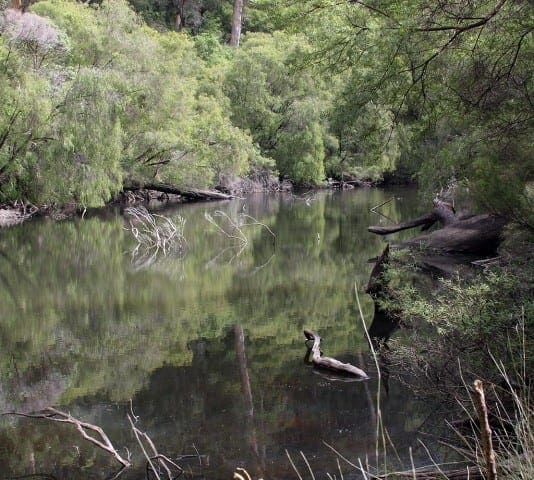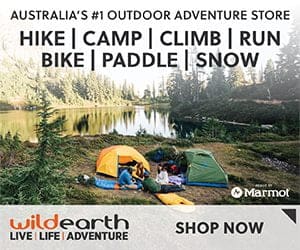Trail Fast Facts
The Cascades is a 1.2km, grade 2 hike in Gloucester National Park, Western Australia. This hike typically takes 45 minutes to complete.
Hike Overview
Set amid the karri forest about eight kilometres south of Pemberton, these rocky rapids and surrounds provide a place for an outdoor lunch, a leisurely afternoon stroll, or a few peaceful hours of fly fishing.
The Cascades are a series of picturesque waterfalls that flow from the Lefroy Brook near Pemberton. Enjoy a lovely day wandering through the forest and fishing at the Cascades. nnNestled in the Gloucester National Park, this tranquil setting is only four hours drive south of Perth. nnJust off the Bibbulmun Track, the walking enthusiast will enjoy the six kilometre walk along the track from Pemberton to the Cascades. There is a trail which allows you to loop around the waterfalls and capture a photo from every angle. The views are magnificent and the natural surrounds refreshing and revitalising. As you wander down to the picnic site from the parking area, listen to the voices of the Birds as they chatter in the trees. Water is always a focus for forest life. From there, its just a few steps to the lookout, or you can get a closer view of the Cascades by stepping down to a Boardwalk that crosses a tributary of Lefroy Brook. Beware of the slippery rocks and stay well back from the water's edge. The loop trail, which starts from the Picnic Area and crosses the Northcliffe tramway, takes you through different types of forest and you will see some lush fern and reed growth near the water. The trail passes through the peppermints and sheoaks. So try to identify the trees or catch a glimpse of a trout or marron in the brook. The national park is home to many of the state's marsupials and wildflowers which can be spotted whilst walking along the trail. Return to Pemberton along the track or alternatively catch the tourist train.
Track Grade
Grade 2 (Easy) - A Gentle Introduction to Inclines: Grade 2 on the AWTGS represents easy walking tracks that offer a slightly more challenging experience compared to Grade 1. Similar to Grade 1, no prior bushwalking experience is required. The track surface is typically hardened or compacted and may have gentle hill sections or occasional steps. The total distance of a Grade 2 walk is typically no greater than 10 kilometers. These walks are still suitable for families with a bit more experience or those seeking a gentle introduction to some inclines.
Tips
Start Point: Gloucester Natioanal Park at The Cascades car park
End Point: Gloucester Natioanal Park at The Cascades car park
Region: Gloucester National Park, South West
For more information, a location map and GPS file please visit Trails WA.
Map and GPX file
Help fellow hikers navigate with confidence. Share your GPX or KML file for this trail and help build a more comprehensive resource with precise waypoints and elevation profiles. Your contribution will empower adventurers with details they need for a safer and more enjoyable experience. I meticulously verify every file using official maps and surveys, ensuring the highest level of accuracy and reliability. Submit your file now and become a trailblazer for your fellow outdoor enthusiasts.
Trail Location (trailhead)
Sorry, no records were found. Please adjust your search criteria and try again.
Sorry, unable to load the Maps API.
Photo gallery
If you have any photos from this hike and are happy to share them, please upload your .jpg files here.
Please note: Uploading photos does not transfer ownership of copyright away from you. If requested, you will be credited for any photos you provide and can ask they be deleted at any time.
About the region
Only 3km from Pemberton, Gloucester National Park is home to Western Australia's most famous karri tree. The Gloucester Tree was once a fire lookout tree and can now be climbed by the public. Those who do venture up the 153 pegs to the top will be rewarded with commanding views of the karri forest and surrounding farmland. The karri forest is home to many native mammal species such as quenda, quokkas, mardos and dunnarts. These animals are shy and rarely seen. Sit quietly in the forest at Cascades and you may be rewarded with the sight of honeyeaters, wrens, fantails and robins flitting around through the undergrowth.
Similar trails nearby
Explore Safe
While planning your hike, it’s important to check official government sources for updated information, temporary closures and trail access requirements. Before hitting the trail, check local weather and bushfire advice for planned burns and bushfire warnings and let someone know before you go. Plan ahead and hike safely.
Let someone know
Adventure with peace of mind: Fill out your trip intentions form. Before you hit the trail, fill out an online form to privately send important details about your hike to your family or friends. If you don’t return on time, they can easily alert emergency services, preventing worry and ensuring a swift response. Hike with peace of mind and enjoy your outdoor adventure to the fullest. Be smart, be safe: Register your plans here.
Gear to consider
What you carry in your pack will depend on the weather, terrain, time of year, type of adventure, and personal preferences. Having trouble deciding what gear’s right for you? My free planning, food and packing checklists provide an introduction to things your could consider (as well as the Ten Essentials) on your day, overnight and multi-day adventures. Customise your kit according to your personal needs, always considering safety first.
Suggest an edit
Trail changed? New features discovered? Has the route changed? Trail permanently closed? Help fellow hikers by suggesting edits! Click above to update route descriptions, GPX file, trail features (like boardwalks), or access conditions (like parking availability). Help me keep the trails info fresh!
Weather
Acknowledgement of Country
Trail Hiking Australia acknowledges the Traditional Owners of the lands on which we hike and pay respects to their Elders, past and present, and we acknowledge the First Nations people of other communities who may be here today.











